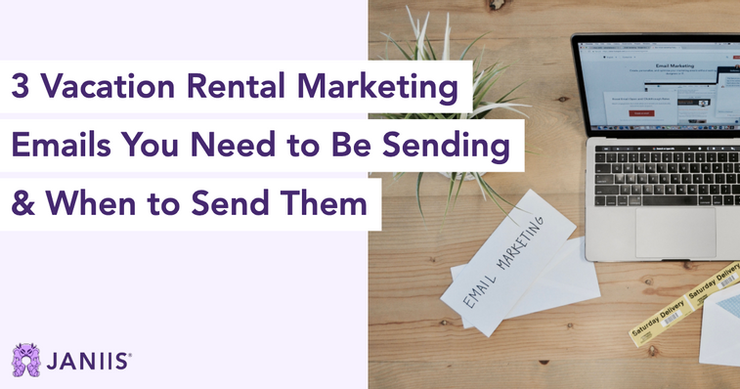It is rare, if nonexistent, for a potential guest to wake up and simply decide they’re going to come stay at one of your properties. There are multiple psychological steps to a potential guest booking a vacation rental. By catering your email content to your guests’ mindset, you can provide your audience with the information they’re looking for, reduce the length of your sales cycle, and increase your bookings.
Read on to learn what guests in each stage of your buyers’ journey are thinking, what they’re looking for, and what content you can provide them in order to build a positive relationship no matter which phase they’re in.

A visual of the buyers’ journey. Note the largest section is top of funnel; you’ll want to produce the most content for this stage. Being patient and giving your guests relevant information is one of the best ways to endear them towards your brand, and incentivize them to ultimately book your property.
1) Awareness: Introduce Yourself
Those in this stage of your buyer’s journey are actively seeking information about the area your vacation rental is in, but they’re not ready to book your vacation rental yet. This is the moment to establish yourself as a resource to your audience by creating content they’ll be looking for. For example, if the majority of those that stay at your properties are families with younger children, great examples of content to send are:
-
-
- “5 Things to Do in Charlotte That Your Kids Will Love”
- “How to Make the Most of Your San Diego Vacation with Young Children”
- “The Ten Best Family-Friendly Ski Areas in Colorado”
-
The goal in this stage is help your audience find what they’re looking for, not sell them on staying at your properties. This phase in the buyers’ journey is all about confirming yourself as a friendly guide, building a positive relationship, and providing your audience with answers to their questions.
2) Consideration: Narrow the Field
After building trust between you and your future clients, you can start differentiating yourself from your competition. The easiest way to do this is to put yourself in the shoes of your audience. From their perspective, what makes your vacation rentals better than others you’re competing with? What value can you provide that can’t be found elsewhere? Knowing your audience, along with your competition, is key here. You need to be able to provide your potential guests with information precisely targeted to their needs, while also showcasing your properties’ unique selling points. Examples of great emails to send here are:
-
-
- “The Top Miami Rentals Less Than $10 Uber Ride from Downtown”
- “5 of the Most Secluded A-Frame Cabins in Rocky Mountain National Park”
- “The Most Eclectic NYC Apartments for the Traveling Freelance Designer”
-
The goal in this instance is to illustrate to your audience that you understand what motivates them, and what they’re looking for when traveling in your area. Then, reaffirm that your properties are the best fit for who they are and what they’re wanting to experience.
3) Decision: Seal the Deal
Once you’ve introduced and differentiated yourself from the competition, it’s time to convert your potential guest. In some ways, this is one of the easier phases of your buyers’ journey, because it’s all about overcoming the final objections to them staying at your properties. From your audience’s perspective, what is keeping them from booking? Is it the price? The lack of social proof from their peers? In this situation, you don’t necessarily want to send “content” like we’ve referred to throughout this post, but simply mitigate hesitations by offering the right incentive. This can be done by:
-
-
- Offering a limited-time discount to someone who abandons a booking
- Providing social proof (reviews) from a look-a-like audience
- Partnering with local businesses to provide an experience relevant to your audience
-
The goal in this phase is to (finally) get the potential guest to book by assuaging their concerns, creating urgency, or creating exclusivity. A limited-time discount, for example, overcomes the “price” pain point, while also encouraging the potential guest to act quickly. Social proof confirms that booking your property is the right choice because their peers behaved in the same way. Partnering with local companies motivates travelers to book since they’ll have a unique experience that is only available when staying at your property.
These are just a few examples, but by creating different types of marketing content with specific goals, you can cater to your future guests and their mindset by meeting them in their stage of the buyer’s journey. Though there are a multiple psychological phases to someone ultimately booking, incorporating these 3 different emails into your marketing strategy will help shorten your sales cycle, boost your bookings, and develop a loyal, happy audience.
Liked this topic? Here are 3 Vacation Marketing Email Templates that will help you craft perfect marketing emails for each stage of the buyers’ journey, line by line! You can also let us know to write more by clicking the heart in the bottom right hand of the post

